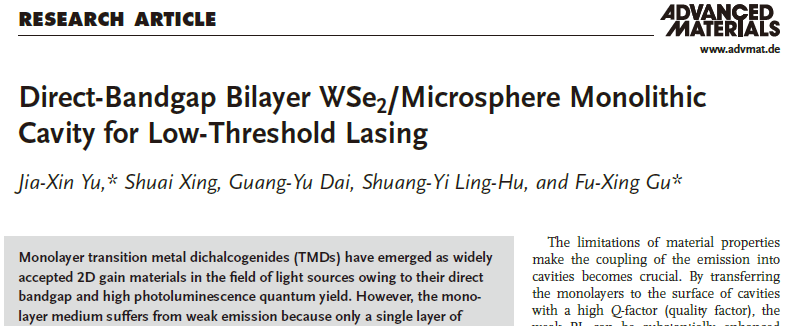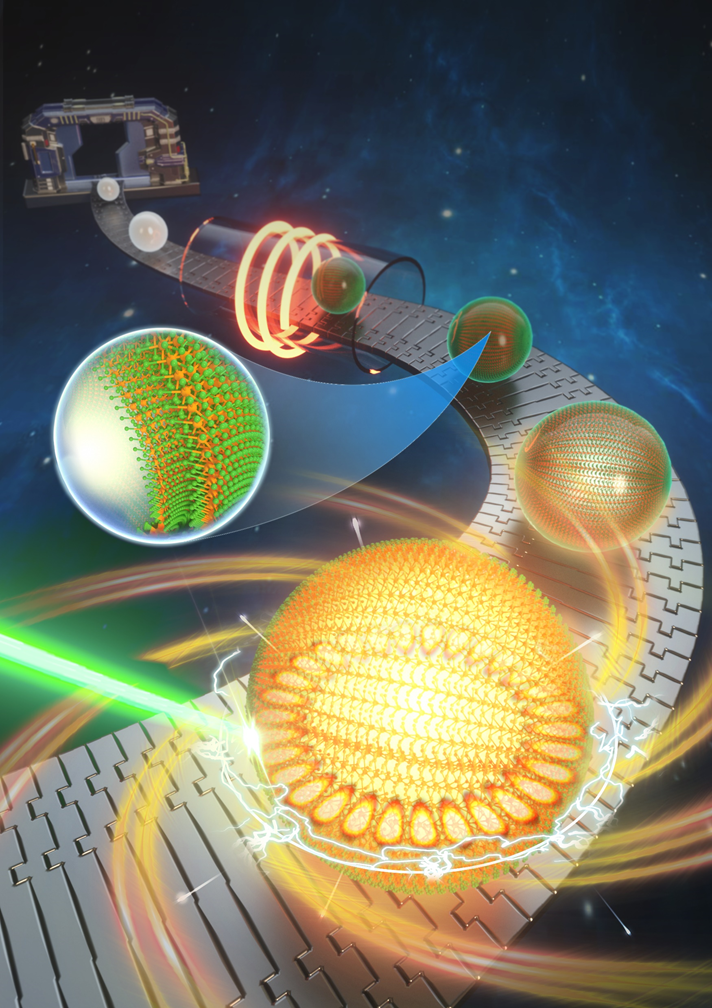Recently, A team led by Academicians Zhuang Songlin and Professor Gu Fuxing from the Future Optics Laboratory published a report entitled "Direct-Bandgap Bilayed-tungsten Selenide (WSe2)/ Microsphere-One Body Cavity for a low Threshold Laser" on an international top journal Advanced Materials (Impact factor 30.849) Bilayer WSe2/Microsphere Monolithic Cavity for Low-Threshold Lasing "). This paper is co-authored by Professor Gu Fuxing and Associate Professor Yu Jiaxin. Associate Professor Yu Jiaxin and doctoral student Xing Shuai are co-lead authors. The program design, experiment and simulation work of this research work are all completed in the Future Optics Laboratory of University of Shanghai for Science and Technology.

In recent years, photonic integrated chips have been considered as a strong competitor for future high-performance integrated chips due to their advantages of fast response speed, wider frequency band and lower line loss. As one of the most important components, micro and nano laser devices are often subject to high power consumption and high processing cost. The microsphere is an excellent optical microcavity structure, which can generate the echo wall mode oscillation with high quality factor under the excitation of pump light, and has been widely concerned in the fields of micro and nano laser and optical sensing. Compared with other common microcavities requiring high precision machining technology (such as F-P microcavity, WG microcavity, photonic crystal microcavity, etc.), microspheres can be obtained through mass industrial production, which is a choice of microcavity with low cost, high yield and good repeatability. If single-layer transition metal chalcogenides are used as the gain medium, the material thickness of single molecule and the quantum yield are extremely high, so it has a good prospect of industrial application in the field of ultra-high integration and low energy consumption micro nano laser. Based on this idea, the integrated Optically Mechanical and electrical team innovatively proposed a two-layer WSe2 that can be coated and deposited on the surface of the microsphere. Through the combination of van der Waals forces, the team technically effectively solves the difficult problem of adhesion between fragile two-dimensional materials and complex surfaces. The surface strain introduced in the deposition process subtly transforms the indirect electron band gap into direct band gap, which significantly increases the photoluminescence intensity by nearly 60 times. In addition, the integrated structure of the gain medium/microcavity greatly improves the light constraint of the cavity. Based on the above advantages, the researchers achieved an ultra-low threshold micro-nano laser of 0.72W/cm2, nearly an order of magnitude lower than the existing laser threshold records. The results of this study demonstrate for the first time the possibility of using multilayer transition metal chalcogenides as two-dimensional gain medium, and also provide a new idea for ultra-compact laser devices.
